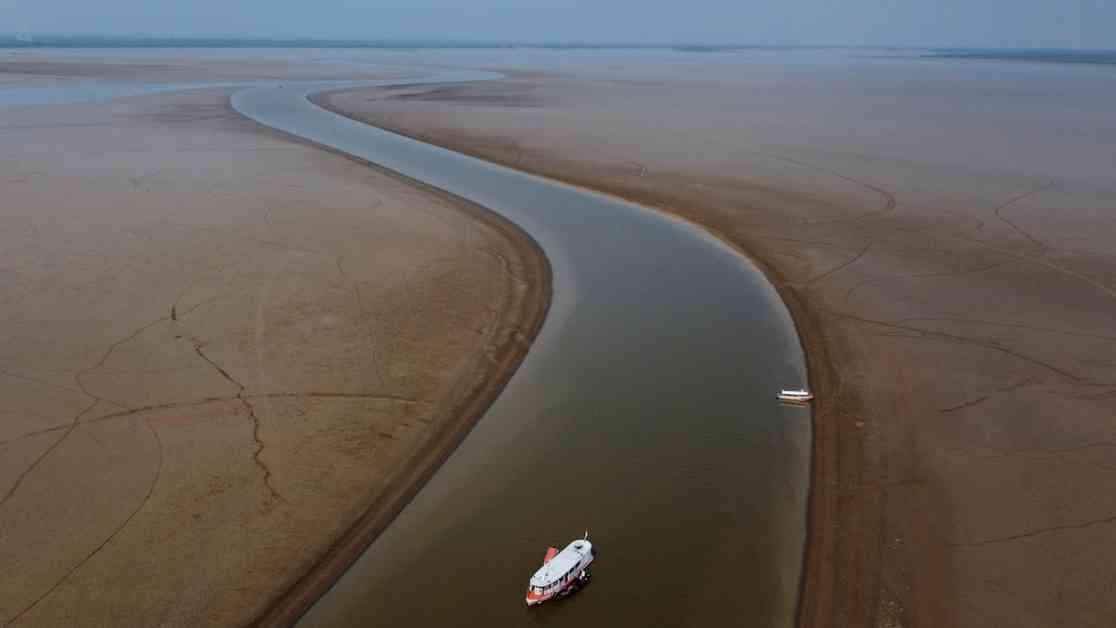It’s hard not to sound apocalyptic when tallying the damages already being caused by climate change in Latin America and the Caribbean. Over the past 12 months, during which we have repeated so many times (too many) that it was the hottest day, month, and year on record, this region has experienced several extreme phenomena that have put countries, cities, and communities in unprecedented crises. From the drought that hit the Amazon, the world’s most powerful river, isolating entire communities, to the fury with which Otis hit Acapulco, Mexico, after rapidly intensifying in the climatic event that caused the most economic losses in the world in 2023.
Both left a huge trail of destruction. And, as experts warned, they were a glimpse of what is to come: these kinds of extreme events will become more frequent if the Earth’s temperature continues to rise. Latin America and the Caribbean, a region with great biodiversity and home to some of the largest carbon sinks in the world such as the Amazon, faces a great paradox: despite being responsible for less than 10% of global polluting emissions, its countries are among those most affected by global warming.
And one of its most visible effects is on water. These five graphs and maps show some of the open fronts in Latin America, a region that hosts 30% of the planet’s water resources, but where much of its population lacks access to water or sees their lives threatened by water-related phenomena.
In Mexico City, this year, the threat of the arrival of ‘day zero’, when the megalopolis could run out of water for its population, has sounded closer than ever before. The graph of the last seven years of water reserves in the Cutzamala system reservoirs – which supply 30% of the metropolitan area of the Mexican capital – looks like a slide. Its storage has been reduced to a historic minimum of less than 210 million cubic meters, 27% of its capacity, leading to an increase in restrictions that some citizens, mainly from lower-income neighborhoods, have been experiencing for years.
Although experts do not predict, as was once foreseen, that the capital’s reserves will be completely depleted on June 26, it is undeniable that Latin America’s second most populous city has serious water problems: lack of precipitation combined with the depletion of underground reserves, pollution, system leaks, and poor management that has lasted for years form a perverse cocktail that different levels of government must address.
Mexico City is not the only capital that has recently found itself in trouble. Although Bogotá is a city associated with rain, the El Niño phenomenon and rising temperatures due to climate change have led the Colombian capital to a water crisis this year that has forced authorities to implement water rationing measures that have been in place for two months. Now, however, Colombia is on alert for the opposite: a strong rainy season is expected in the second half of the year, associated with the La Niña phenomenon, which could cause floods, tropical cyclones, and landslides.
While some areas of the continent suffer from severe droughts, others drown, as was the case this year in Rio Grande do Sul, in southern Brazil, which experienced unprecedented floods that left at least 172 dead, about 40 missing, and nearly $7 billion in economic losses. Additionally, almost 580,000 people were forced to leave their homes. In its capital, Porto Alegre, in May, the historical record of rainfall was broken, according to data provided by the National Institute of Meteorology to this newspaper, marking the largest floods since records began in 1916.
Overall, the impact of climate change on water resources in Latin America and the Caribbean is becoming increasingly visible, affecting millions of people and ecosystems. As global temperatures continue to rise, the region must adapt and implement sustainable solutions to mitigate the negative effects of climate change on water availability and quality. The challenges are immense, but with coordinated efforts and international cooperation, it is possible to build a more resilient and sustainable future for the region.















